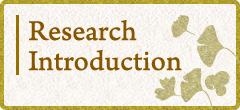- Home
- Research Introduction
- Eisei Bunko Library Hosokawa Clan Literature (five volumes)
Eisei Bunko Library Hosokawa Clan Literature (five volumes)
- "Eisei Bunko Library - Medieval Hosokawa Clan Literature" Yoshikawa Kobunkan, 2010
- "Eisei Bunko Library - Hosokawa Clan Literature - Diagrams, Maps, and Written Orders Vol. 1" Yoshikawa Kobunkan, 2011
- "Eisei Bunko Library - Early Modern Period Hosokawa Clan Literature" Yoshikawa Kobunkan, 2012
- "Eisei Bunko Library - Hosokawa Clan Literature - Diagrams, Maps, and Written Orders Vol. 2" Yoshikawa Kobunkan, 2013
- "Eisei Bunko Hosokawa Clan Customs and Military Records" Yoshikawa Kobunkan, 2014
*All volumes are edited by the Faculty of Letters Eisei Bunko Research Center
- Content
-
- "Eisei Bunko Library - Medieval Hosokawa Clan Literature"
A complete record of the Muromachi Period documentation of the trends within the Hosokawa Clan, who supported the Ashikaga shogunate. This volume contains over 260 priceless documents complete with pictures, including 59 letters by Oda Nobunaga, some written in his own hand; works describing the incident at Honno-ji between Akechi Mitsuhide and Toyotomi Hideyoshi; historical documents concerning the Kokindenjyu and ancient practices of the busho; and the works of Fujitaka Hosokawa, the foremost intellectual of the Sengoku Period. This is an indispensable tome for understanding the political trends and traditional culture of the Muromachi and Sengoku Periods. - "Eisei Bunko Library - Hosokawa Clan Literature - Diagrams, Maps, and Written Orders Vol. 1"
A carefully selected collection of over 1,000 pictures and diagrams related to the Hosokawa Clan and 168 invaluable illustrations of the scenery and architecture of the era. Each picture is lovingly displayed in full color. Subjects include Fujitaka Hosokawa's own Tanabe Castle and others from the Sengoku Period; Muromachi Period depictions such as Edo Castle and daimyo residences; Kumamoto Castle and the Kunimoto Residence; and other sights from the Higo feudal domain such as temples, teahouses, residents' dwellings, etc. - "Eisei Bunko Library - Early Modern Period Hosokawa Clan Literature"
A long-awaited volume for understanding the governing activities and traditional culture of Japan's medieval and modern periods. This volume collects 261 documents from the period (the 7th year of Genna onward) when the third generation Hosokawa ruler, Hosokawa Tadatoshi, inherited the ruling right from his father Tadaoki, and came to reside in Buzen Kokura Castle. Containing personally written letters, official notes of approval, and vows of fealty from retainers, these documents reveal the organizational and administrative system of the Hosokawa Clan as the land transitioned from the old Higo era to the new Kumamoto one, and this clan solidified rule and order in its new domain. Readers can learn about the importance of continuity as a "house" replacing the master-servant relationships that prevailed during Japan's medieval period. - "Eisei Bunko Library - Hosokawa Clan Literature - Diagrams, Maps, and Written Orders Vol. 2"
This excellent selection of 203 historical documents from the grand legacy of the Hosokawa Clan examines the theme of "The founding of the Tokugawa Shogunate and Feudal Rule." This volume contains full color pictures such as depictions of the battles leading up to the founding of the Tokugawa, provincial maps used for governance by the samurai and daimyo classes, as well as roadway maps, foreign ship illustrations, and world maps from the eras of sankin-kotai and sakoku policies, and more. These images show the changing shape of Japan in Higo's modern period. Reference this along with the first volume to deepen your understanding of the Hosokawa Clan. - "Eisei Bunko Hosokawa Clan Customs and Military Records"
This volume assembles a wealth of knowledge on a variety of subjects, such as horseback archery techniques; military formations; crafting instructions for swords, armor, and clothing; customs regarding giving birth, coming of age, marriage, observances to maintain the honor and status of daimyo households; religious ceremonies; and more.
This book collects 132 full color documents describing customs and military history. The authors compare documents of the same time period and identify each document's author in order to uncover from whom Fujitaka and Tadatoshi Hosokawa inherited the documents codifying their customs, whose legacy they carried out.
- "Eisei Bunko Library - Medieval Hosokawa Clan Literature"





